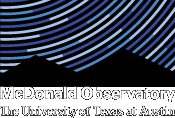California is the land of the stars. It's also in the stars as the California Nebula, a cloud of gas and dust that looks like the outline of the state. It is more than 1,000 light-years away, in Perseus.
California is the land of the stars. It's also in the stars as the California Nebula, a cloud of gas and dust that looks like the outline of the state. It is more than 1,000 light-years away, in Perseus.
